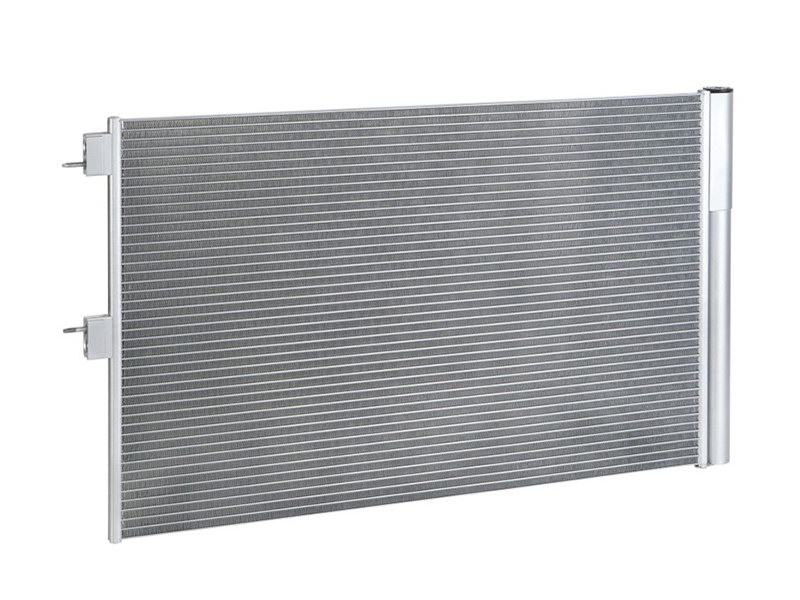
Microchannel evaporators have become a cornerstone in modern HVAC and refrigeration systems, renowned for their efficiency and compact design. However, achieving optimal performance from these advanced components requires careful consideration of various design factors. This article discusses critical design considerations for maximizing the performance of microchannel evaporators, including integration with microchannel condenser, to ensure superior system efficiency and reliability.
Material Selection and Compatibility
Material Choice: The choice of materials is paramount for the performance and durability of microchannel evaporators. Aluminum is the preferred material due to its excellent thermal conductivity, lightweight nature, and corrosion resistance. However, the compatibility of aluminum with other system components, such as microchannel condensers, must also be considered to prevent galvanic corrosion.
Coatings and Treatments: Applying protective coatings can enhance the corrosion resistance and longevity of microchannel evaporators. Anodizing aluminum, for instance, creates a robust oxide layer that provides additional protection against environmental factors. Selecting the right coatings based on the operating environment is crucial for maintaining optimal performance.
Geometric Design and Configuration
Microchannel Geometry: The geometry of the microchannels significantly influences the heat transfer efficiency and pressure drop within the evaporator. Optimizing the size, shape, and arrangement of the microchannels can enhance the surface area available for heat exchange while minimizing resistance to fluid flow. Computational fluid dynamics (CFD) simulations are often used to fine-tune these parameters for maximum efficiency.
Tube and Fin Design: The design of the tubes and fins in the evaporator also impacts performance. Flat tubes with microchannels offer a high surface area-to-volume ratio, facilitating efficient heat transfer. Incorporating louvered or wavy fins can further increase the surface area and improve air-side heat transfer, enhancing the overall performance of the microchannel evaporator.
Refrigerant Management
Refrigerant Choice: The selection of refrigerant is a critical factor in the design of microchannel evaporators. Refrigerants with high latent heat of vaporization and low global warming potential (GWP) are preferred for their efficiency and environmental benefits. The refrigerant should also be compatible with both the microchannel evaporator and the microchannel condenser to ensure seamless operation.
Flow Distribution: Ensuring uniform refrigerant distribution across the microchannels is essential for optimal performance. Maldistribution can lead to hotspots and reduce the overall efficiency of the evaporator. Using distributors or manifolds that evenly distribute the refrigerant can mitigate this issue, ensuring consistent performance.
Thermal and Mechanical Performance
Heat Transfer Optimization: Maximizing heat transfer requires a balance between enhancing surface area and minimizing pressure drop. Incorporating advanced heat transfer surfaces, such as micro-fins or turbulence enhancers within the microchannels, can improve heat transfer rates without significantly increasing pressure drop.
Mechanical Strength: The evaporator must withstand the thermal and mechanical stresses encountered during operation. Ensuring adequate wall thickness and structural integrity of the microchannels can prevent deformation and leaks. The mechanical design should account for potential expansion and contraction due to temperature variations, maintaining performance and reliability.
Integration with System Components
Compatibility with Microchannel Condensers: The performance of a microchannel evaporator is closely linked to the performance of the microchannel condenser. Both components should be designed to work together seamlessly, with matched capacities and compatible refrigerant types. This integration ensures that the evaporator receives the optimal amount of refrigerant in the correct state, enhancing overall system efficiency.
System Layout: The placement and orientation of the microchannel evaporator within the system can impact its performance. Ensuring proper airflow and avoiding obstructions can maximize heat transfer efficiency. Additionally, the evaporator should be positioned to facilitate easy access for maintenance and inspections.
Environmental and Operational Considerations
Operating Conditions: The operating conditions, including temperature ranges, humidity levels, and environmental exposure, should be considered during the design phase. The evaporator must be capable of performing efficiently under the specific conditions it will encounter, whether in commercial HVAC systems, automotive applications, or industrial refrigeration.
Maintenance and Durability: Designing for ease of maintenance can extend the lifespan of the microchannel evaporator and ensure consistent performance. Features such as easy access to the coils, corrosion-resistant materials, and robust construction can reduce downtime and maintenance costs.
Conclusion
Designing microchannel evaporators for optimal performance involves a comprehensive approach that considers material selection, geometric configuration, refrigerant management, and system integration. By addressing these factors, engineers can develop efficient, reliable, and durable evaporators that enhance the overall performance of HVAC and refrigeration systems. For more insights and detailed information about microchannel coils, visit Kaltra. As technology advances, these design considerations will continue to evolve, driving further improvements in microchannel heat exchanger performance.
